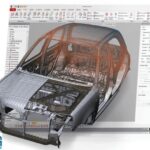Linear actuators have been around for quite a long time now. They are used in a number of different fields, from manufacturing industries to our everyday life. However, since the time of their creation, a lot has changed in the design of linear actuators.
Furthermore, there are many more different types of them available now, so it is a lot harder to find the most suitable one for your objective.
So, in order to make your life easier, we’ve decided to compare linear actuators that have different basic principles behind them and to take a look at some of the most popular actuator models. Here is the linear actuators comparison you’ve been waiting for!
Different Types of Linear Actuator’s Operation Principles
There are a lot of different types of actuators. Furthermore, devices of each type have changed quite a lot since the first prototypes were developed. Most linear actuators are quite complex systems. So, let’s take a look at some of the prime examples of linear actuator with different principles of operation and find out which situations they are most suitable for.
1. Pneumatic linear actuators
Pneumatic systems were used as a part of one of the first linear actuators. As is clear from their name, they use compressed air to create a straightforward motion. The overall design of these actuators is quite simple: a rod, one end of which connects to whatever you need to move, and the other go inside a pneumatic cylinder.
The pros of such a system include its simplicity. You don’t need any specific knowledge to implement it; the “fuel” for these types of engines is just compressed air, so there is no danger to the environment and it’s fairly easy to obtain, and it also is very versatile – pneumatic actuators are often used in the most dangerous and extreme conditions because there is no risk in using them.
Being the oldest technology in the field, this type of actuator does have some disadvantages. Firstly, they are the least efficient of the types mentioned here. Furthermore, they often require maintenance, which adds to the money you’ll have to spend on them. Lastly, they are not al that accurate, as you won’t be able to stop them mid-stroke or regulate the length they operate on.
2. Hydraulic linear actuators
Hydraulic actuators are fairly similar to the pneumatic ones in the way they operate. The main difference lies in the material that is used to propel the cylinder. Instead of air, these linear actuators use some sort of liquid or emulsion. They’ve been the most popular type of actuators for a long time. So, what’s so great about them and what disadvantages do they have?
Hydraulic linear actuators have improved greatly compared to the pneumatic systems. They still are easy to incorporate into a mechanism, but they are also much more effective, don’t need a lot of attention and money to maintain, and can be much more precise.
However, these structures have some cons too. First of all, they are not very environmentally friendly. Any sort of liquid is not as easy to obtain as compressed air, and if it spills – that can lead to a disaster. Secondly, the performance of these actuators varies depending on the environment they are in, especially if there is a big difference in temperatures. Lastly, you won’t be able to change a part of it. The failure of a single component will often lead to a failure of the whole system.
3. Electric linear actuators
The latest addition to the line-up of linear actuators, these instruments have quickly become the most popular ones. Although these systems are more complex than the ones mentioned above, they are still fairly simple. Most electric actuators consist of a simple stepping drive and a system that transforms angular movement into linear (this you don’t really have to worry about).
There are multiple pros to these motors. Firstly, they are considered the most cost-efficient and environment-friendly. Unlike pneumatic actuators especially, they are fast and quiet. Furthermore, you won’t really have to maintain them at all. Lastly, they can be programmed to be almost as accurate as you wish (depending on the model and the complexity of the system).
The only problem you might have with these actuators is their intricacy. You would need to have at least some basic knowledge of electronic systems in order to set the linear actuator up. However, most manufacturing companies are actively trying to make this task easier for you.
The Most Popular Models Of Electric Actuators
Let’s compare some of the highest-rated and most popular electric linear actuators for different tasks:
1. Lenco 15054-001
This is one of the most basic actuators out there, suitable for most everyday tasks you might have. Developed for a boat, it is suitable for humid environments. With a standard kit, it can be easily mounted in almost no time.
2. WINDYNATION 12-inch linear actuator
This linear actuator offers the same functionality as the previously mentioned model, but it’s almost two times cheaper. Furthermore, it can be used for much heavier loads. Its only downside is that it’s much slower. So, pick this actuator if the speed of a stroke is not too important to you.
3. Eco-worthy Heavy Duty actuator
Another actuator that is suitable for heavy-duty action, this model was specifically developed to move solar panels to follow the sun. However, it can still be easily used for any other task you might have for it. So, let your imagination run wild!
Final Thoughts
Electric linear actuators have flooded the market in recent years. This popularity is partly due to their environmental friendliness, and partly it is because they are so versatile and precise. However, there still is a place for pneumatic and hydraulic actuators out there. They are still used in extreme situations, where a single spark can lead to a disaster. So, before buying an actuator, carefully analyze your task, and think about all the possible outcomes in your situation.



